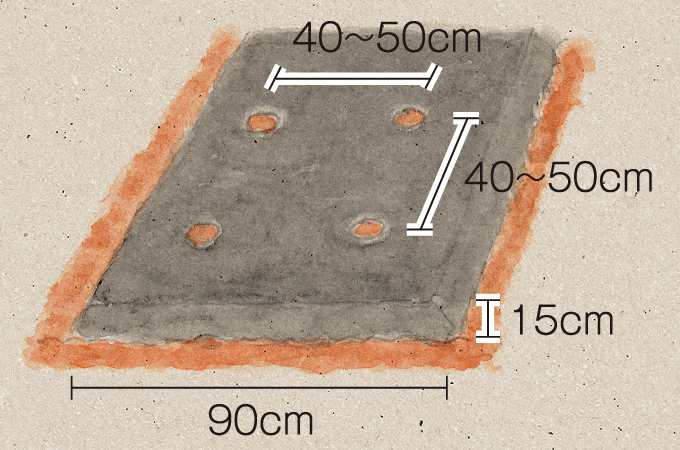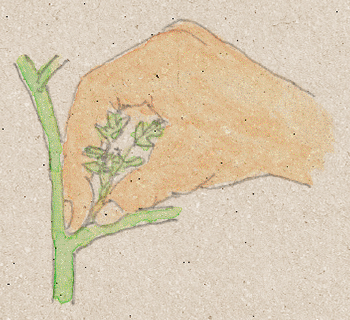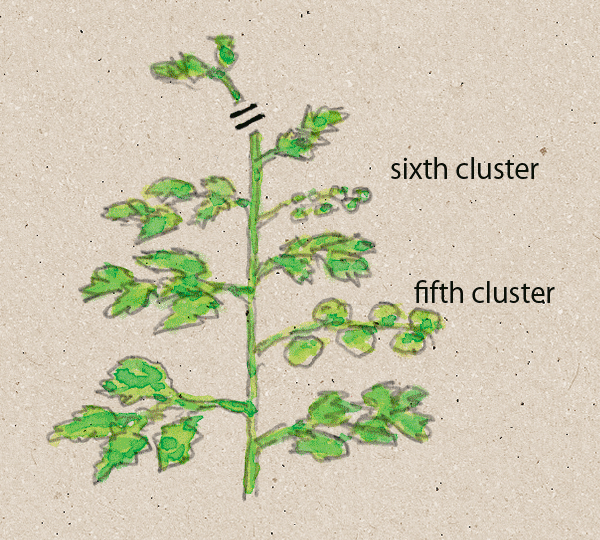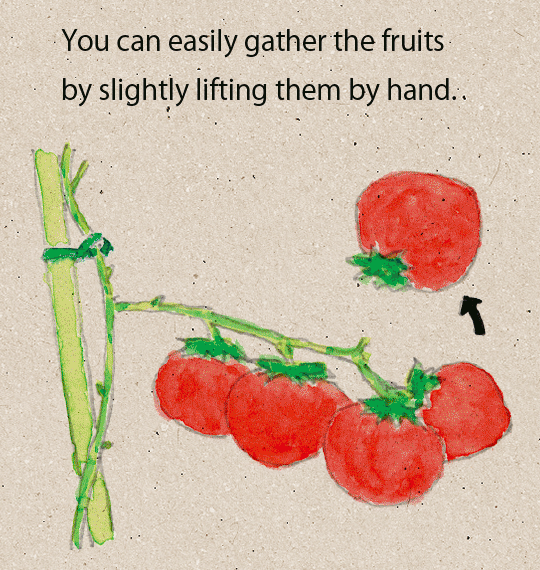

Garden-fresh and fully ripened tomatoes are the special joy of home gardening. They are exceptionally delicious as they are or cooked.

Up to two weeks before planting seedlings, disperse 150g of magnesia lime over the soil per square meter, and plow deeply. One week later, apply 5 to 6kg of compost and 100g of compound fertilizer as base fertilizer, over the soil per square meter, mix them into the soil, and create ridges with a width of 90cm and a height of 15cm. Lay a polyethylene mulch film on the ridges, and bore holes at 40 to 50cm intervals between the plant rows, and between the stubs.


Dig the soil visible from the holes of polyethylene film, and plant seedlings at a slight angle while trying to keep the clump of soil around the roots. This will stabilize the seedlings as they grow, and strengthen them against wind.

After planting, put up sturdy stakes with a height of at least 2m, around each seedling to form inverted Vs by pairs of stakes, and firmly tie the stems to each stake with vinyl ropes. Afterward, as the stems grow, tie the stems at 20cm intervals to the stake, which serves as a guide.

After planting, at a pace of once or twice a month, add a handful of compound fertilizer on the ridge side, plow lightly, and earth up the soil.
Nip axillary buds developing in the axils of leaves with fingers so that only the center stem grows.

As the plant grows, it bears flower clusters from below upward. When the fifth or sixth cluster from the bottom appears, pinch off the stem from the highest cluster upward by hand except two leaves just above the top cluster to stop the growth.

Tomatoes that have caught a pest or disease cannot be harvested any longer, so try to control pests and diseases before their outbreaks. If you find a pest or disease, pull out the roots promptly to prevent infection to other roots.
You can harvest tomatoes 45 to 60 days after flowering. Pick red-ripening ones first.
